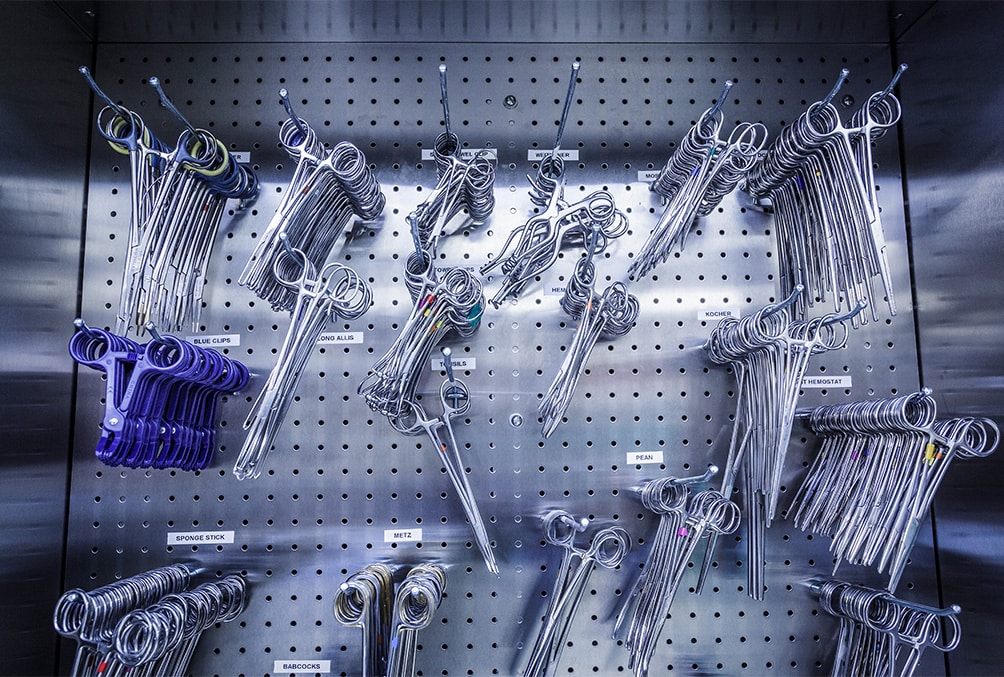
While some medical instruments and items are used, cleaned, sterilized, and reused many times over their lifespan, others are designed to be used only one time and on only one patient. Not surprisingly, items like bandages and gloves fall into the second category.
However, many metal medical instruments are meant for one use only, as well. There are a number of reasons for this, including:
- Patient safety would be compromised if the item was used again because its functionality is greatly diminished after one use
- An item’s design or features make it difficult or impossible to properly clean and sterilize it following a procedure, so reuse may cause cross-contamination
- The item’s characteristics are changed as a result of contact with chemicals or other substances used in a procedure
- The cost of cleaning and sterilizing the item following a procedure is significantly higher than obtaining a new one and would unnecessarily increase patient costs
Of course, even though single-use devices will only be utilized once, doctors, dentists, and the patients who rely on them need the item’s performance to be maximized. For many types of medical instruments, that means applying a biocompatible chromium coating.
Understanding the Limitations of Stainless Steel
A high percentage of medical devices made of metal are constructed of stainless steel. Stainless steel is an iron-based alloy that contains other elements like nickel and chromium–chosen for their ability to increase its strength, durability, corrosion resistance, and other properties as needed for a particular application.
But even with these additions, stainless steel is not impervious to corrosion and staining. Changes to stainless-steel medical devices can and do occur, even in the course of a procedure. Consequently, many types of devices require additional protection from the physical forces and chemical interactions that take place on or within the human body when they are used.
Biocompatibility: Crucial in Medical and Dental Applications
In order for a substance to be approved for contact with human tissue or fluids, it must be tested and certified to cause no harm to patients. The industry-first biocompatible chromium coating developed by ME-92 Operations has undergone and passed an extensive battery of tests including:
- ISO Systemic Toxicity Study (ISO 10993-11)
- ISO Maximization Sensitization Study (ISO 10993-10)
- ISO Pyrogen Study—Material Mediated (Pyrogenicity) (ISO 10993-11)
- Cytotoxicity Study Using The ISO Elution Method (ISO 10993-5)
- ISO Intracutaneous Study (ISO 10993-10)
- ASTM Hemolysis (ISO 10993-4)
The combination of complying with these requirements and meeting ME-92’s own exceptionally high-quality standards means that items coated with this inert, non-magnetic, USP Class VI, Tripartite/ISO, and antimicrobial material are safe and effective for the single-use applications for which they are designed.
3 Advantages of Chromium-Coated Single-Use Medical Instruments
Coating single-use medical instruments in chromium is beneficial for three primary reasons:
- Sustained functionality. If an instrument’s functionality—its ability to cut, grip, etc.—degrades during a procedure, that development is problematic for a few reasons. For one, it increases the risk of an unsatisfactory outcome. It also makes it harder for the device user to perform their work, as they have to compensate for the loss of performance. And switching to a new instrument midway through a procedure can interrupt the flow and be detrimental to the result, particularly if the change has to be made at a critical point of the process.
- Easier cleaning during procedures. Coating an instrument provides an extremely smooth, friction-free surface. If an item is typically wiped or cleaned periodically during a procedure, the coating makes it significantly easier to remove material, so the user can stay focused on the task at hand.
- Improved outcomes and enhanced patient safety. The more precise actions during a procedure made possible by a chromium coating can lead to better outcomes including faster and more complete healing. The coating can also increase patient safety.
Chromium coatings can be applied to single-use devices, or any items, at thicknesses of 0.00004” to 0.001” per side (1.0-25.0 microns). As a result, instrument tolerances, weight, and balance remain true to their specifications.
ME-92 works closely with stakeholders like medical device design engineers and manufacturers to ensure that chromium coatings are optimized for a particular type of instrument and its intended use. That may include applying plating to prototypes, to a small number of items for testing, or to large production runs once a device’s design has been finalized and approved.
Ultimately, coating single-use devices in chromium is an effective and affordable way to ensure that instrument users get the performance they need and patients get the results they are counting on.